There are many different lamps on the lighting equipment market, among which it is easy to notice a model popularly referred to as “corn. This unusual light bulb has received mixed reviews from consumers and experts. Let’s figure out what its features are and whether it is worth buying.
Design features, device diagram
“Corn” is called an LED lamp, which in appearance resembles a cereal inflorescence (cob) of the plant of the same name. The light bulb consists of a small oblong cartridge up to 9 cm high, on the side faces of which there are rows of yellow LEDs. Design Features:
- due to the chaotic arrangement of the LEDs, the light is scattered in all directions;
- LEDs are located on plates, metal or textolite;
- inside the lamp there is a driver that feeds the LEDs with current;
- There is no diffuser in the lamp.
 There are three main elements involved in the lamp circuit:
There are three main elements involved in the lamp circuit:
- C1 – quenching capacitor;
- C2 – filter capacitor;
- diode bridge (voltage rectifier).
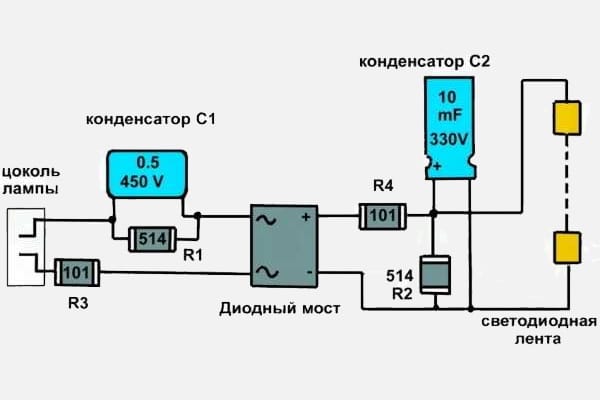
In children’s rooms, it is recommended to use “corn” lamps with an incandescent temperature of no more than 3,000 K.
Specifications
The “corns” are equipped with SMD 5630/5730 LEDs. Manufacturers who have been producing such lamps for many years install 0.5 W diodes in them. Chinese models use less powerful light bulbs. Specifications:
- incandescent temperature – 3,000-4,000 Kelvin;
- base – screw;
- power consumption – 3-30 W;
- luminous flux – 250-2500 Lm (about 100 Lm per 1 W);
- rated voltage – 220 V;
- service life – 100,000 hours;
- operating temperatures – from -40 to +50 degrees;
- The weight and dimensions of each product are individual.
Application
“Corn” is used to illuminate residential and office premises, shops, salons, public places. The most widely used models with socles E14, E27 and E40 with 40-70 LEDs. The scope of the “corn” lamps largely depends on the base. There are three variants of it:
- E14. Today, many lamps and chandeliers are designed for light bulbs with a base diameter of 14 m. E14 “corn” is suitable for them. It is recommended to use 9W models. It is extremely difficult to find an analogue of E14 among conventional LED lamp bulbs. Lamps with a power of 5-6 W give a brightness of 500 lm and cannot illuminate the room with high quality.
- E27. Lamps with a standard base, they can be screwed in instead of incandescent lamps. The luminous flux decreases by about 30% in 2 years.
- E40. Lamps with a base diameter of 40 mm are used for street lighting. They last four times longer than sodium counterparts, they do not require additional equipment, except for the driver, which is already built into the lamp.
Kinds
Manufacturers produce several types of LED-lamps such as “corn”. They differ in design, materials, LED power, appearance and other parameters. Each type of lamp has its own characteristics, price, pros and cons.
Classic big
These are large lamps that use SMD 5630, 5730, 5050 diodes with a power of at least 0.15 W. They have standard bases – E14, E27, E40, the number of LEDs is 24-165.
Classic large lamps show good performance with high-quality color reproduction and bright light output.
Features of the work of classic lamps:
- High-quality lamps from well-known manufacturers work for a long time and smoothly.
- Many Chinese lamps use lower power LEDs than advertised.
- If you buy a low-quality lamp from a little-known manufacturer, you may encounter flickering or poor light output. But even in this case, you can fix the situation. Craftsmen repair lamps by soldering additional elements into their circuits.
- Over time, the light flux decreases, and the plastic housing becomes yellowish.
- LEDs are located only on metal plates.
The power of a classic “corn” lamp is easy to calculate on your own. To do this, multiply the number of diodes by 0.15 (LED power).
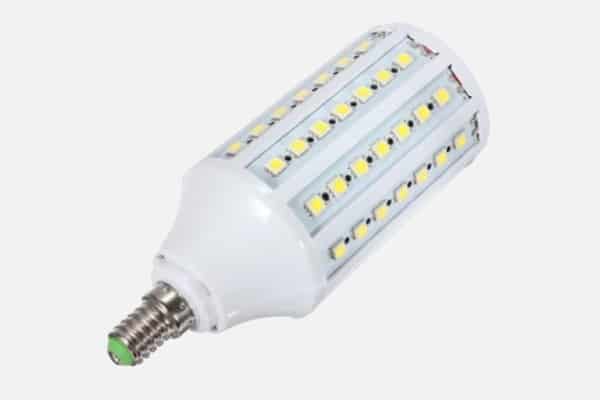
Small with a flask
These small lamps use SMD 5630, 5730, 5050 low power diodes (0.08 W). Products look neat and aesthetically pleasing – this is achieved thanks to the flask, dressed on a cartridge with light bulbs.
Models of this class are not highly rated by experts and consumers. Lamps with flasks have too many design flaws.
Features of lamps with flasks:
- The bulb prevents heat from being removed, which causes the lamp to become very hot.
- LEDs are attached not to metal, but to textolite plates, which impair heat dissipation. There are times when the textolite burns out.
- Almost half of the LEDs fail after a month or two of work.
The declared characteristics of such lamps are often exaggerated and do not correspond to reality. For example, 20 V models in practice show 6 watts. Due to the low power of LEDs, the brightness of such lamps is lower than promised – about 100 lm.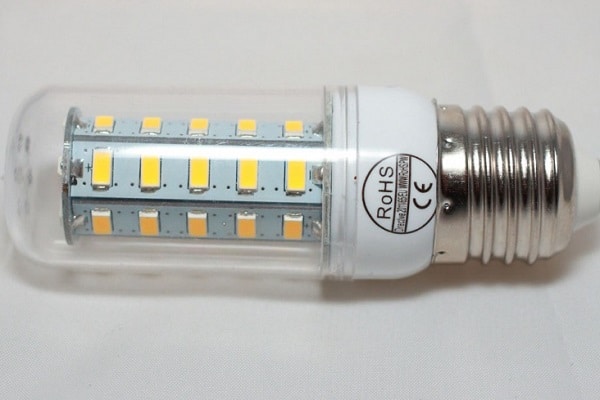
On COB LEDs
COB (chip on board) – a new type of LEDs, which are a kind of super-bright crystals. Lamps with such diodes stand out for their appearance and harmoniously look in modern interiors. The lamp uses large COB LEDs, so there are not many of them – 6-12 pieces. Outwardly, such models no longer look like corn cobs. The main advantage of such models is high-quality color reproduction and luminous flux. The plates in them are metal, and not textolite, as in lamps with a bulb.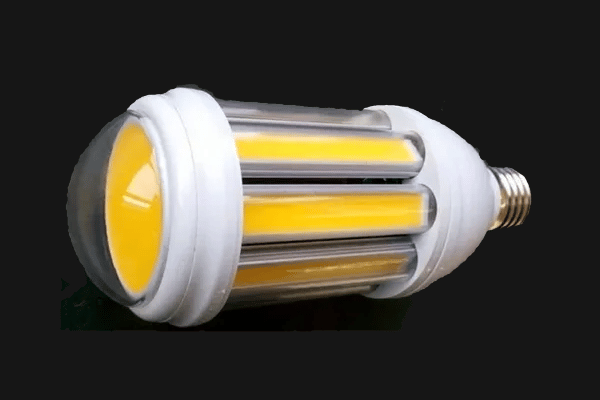
Lamps on COB-LEDs show reliable and high-quality work, but, unlike the classic “corn”, they cannot be repaired.
If the lamp breaks, it will have to be thrown away. Another disadvantage is the high cost.
Advantages and disadvantages
“Corns” are not as popular as conventional LED lamps. This is due to the ambiguous quality of the lamps and a lot of negative reviews. These products are mainly made in China. European firms do not undertake the production of lamps that do not meet safety standards. Despite the existing shortcomings, “corn” lamps still find their users, as they have a lot of advantages:
- Great brightness . “Corn” shines at least ten times brighter than an ordinary incandescent lamp. A 10 watt LED light is equivalent to a 100 watt incandescent bulb.
- Long service life . Manufacturers promise that “corn” is able to work continuously for 10 years or more. Considering that the device is not turned on around the clock, it makes sense to count on 20-30 years of service.
- Withstands extreme temperatures . Lamps are able to work in severe frosts and extreme heat, so they are widely used for street lighting.
- You can see how many LEDs are in the lamp . By the number of rows and diodes, one can judge the power and luminous flux.
- No frosted flask needed . The LEDs are arranged in a circle and cannot be seen all at the same time. Therefore, “corn”, unlike conventional lamps, does not dazzle. If you put the flask, the light flux is reduced by 20-50%.
- No need for diffusers . LEDs located throughout the cartridge themselves shine in all directions.
- Ease of repair . diodes are glued on. If necessary, you can disassemble and repair the lamp.
- Absence of a cooling radiator . This reduces the price of products.
Fire safety regulations prohibit the use of lamps without bulbs, so employees of the relevant services may file claims for “corn” used in public places.
Cons of LED lamps of this type:
- high price;
- high incandescent temperature;
- may overheat;
- as they work, they malfunction;
- there are open contacts that are energized;
- the declared technical characteristics do not correspond to the actual indicators;
- in order for the lamps to work reliably in a 220 V network, it is necessary to solder an additional capacitor;
- do not withstand voltage fluctuations in the network, the brightness of the glow changes.
Although the voltage on the open contacts is low, safety precautions must be observed when screwing in / out of the lamps. When the lamp is screwed into the holder, it begins to light up slightly, in contact with the body.
High incandescent temperature adversely affects the eyes. To minimize harm, it is recommended to choose lamps with minimal heating.
Features of the operation of lamps on LEDs such as “corn” largely depend on their design. The most reliable and attractive models are in the classic version and on COB LEDs. They are economical, reliable and have an attractive appearance.

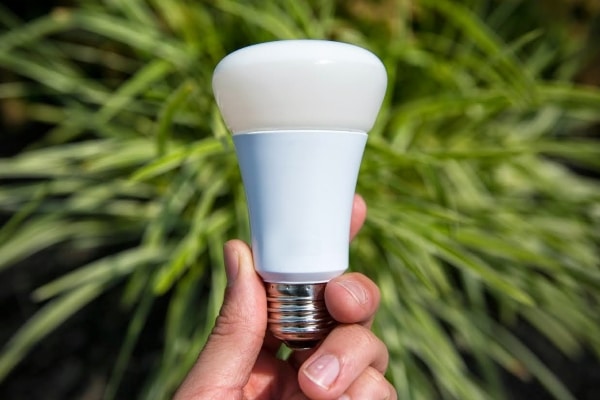

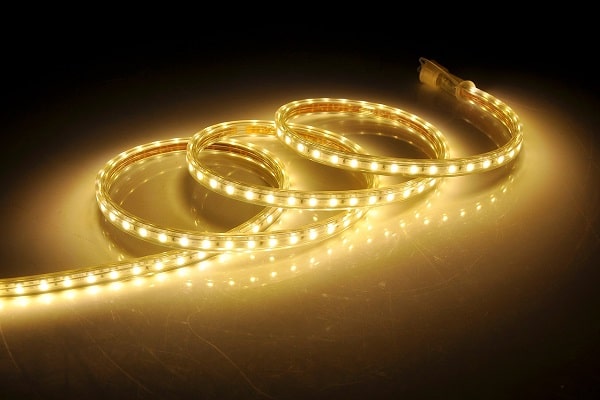

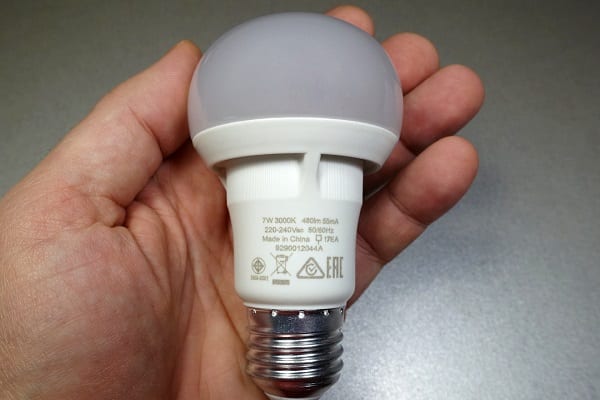
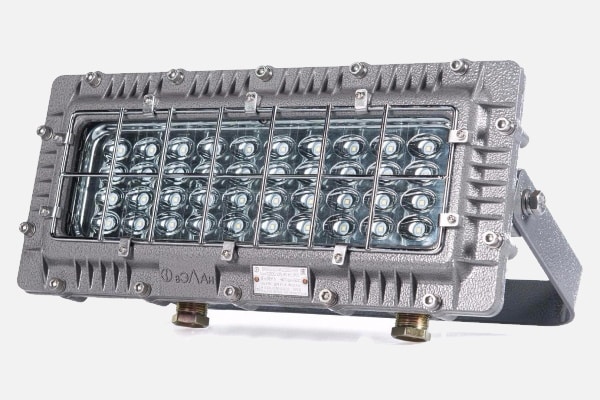
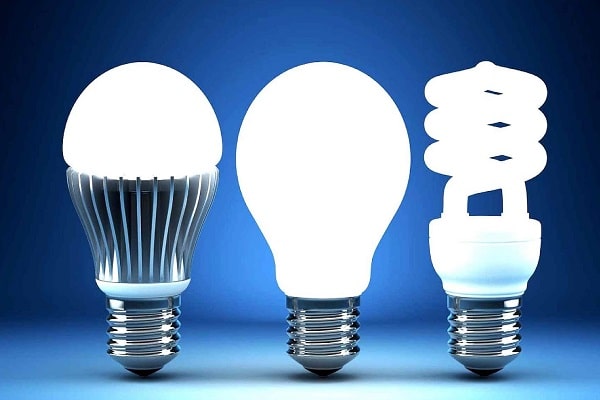
Мне эти лампы типа “кукуруза” нравятся стабильностью работы. Такие лампы становятся популярными через то, что их можно использовать в разных средах и в широком температурном интервале, то есть при разных погодных условиях. Схема питания диодов достаточно сложная, и именно по этому продолжительность службы зависит от качества радиодеталей. По этому такие лампы надо покупать у известных производителей, которые уже длительное время на рынке. Также надо учитывать и то, что если мощность диодов меньше нужной, то освещение будет не равномерным.
Да, эти лампы очень долгосрочны, но на счёт дорогих брендовых производителей я бы поспорил. У меня стоят дешевые лаймпы в подсобном помещении и ни в чем не увидел отличия от дорогих( в гараж покупал), и так же работают уже очень долго. Ещё одним плюсом считаю излучение света в разных направлениях, из-за расположения светодиодов. Лучше брать лампы большой мощности.
Когда мы открывали свои салон красоты, то было очень важно подобрать правильное освещение. Такое, чтобы всем мастерам было удобно работать. Особенно это было важно для парикмахеров, потому что у них дополнительного освещения нет, в отличие от мастеров маникюра. Долго выбирали и присматривались, но в итоге остановились на лампах “Кукуруза”. Их выбрали из-за того, что они рассеивают свет и освещают мягко. Такой свет не давит на глаза и при нем удобно работать. Еще одно преимущество этих ламп в том, что они экономичны.